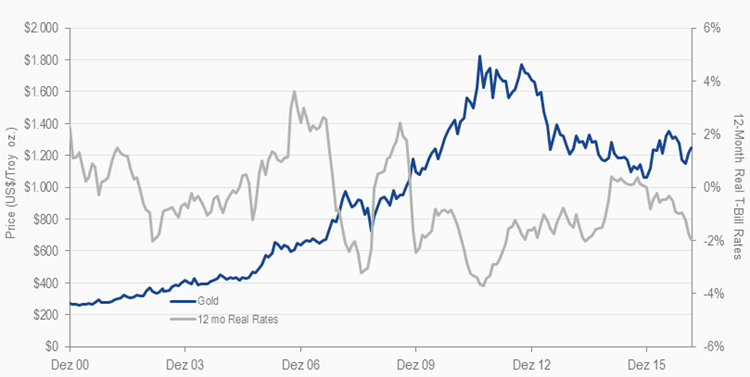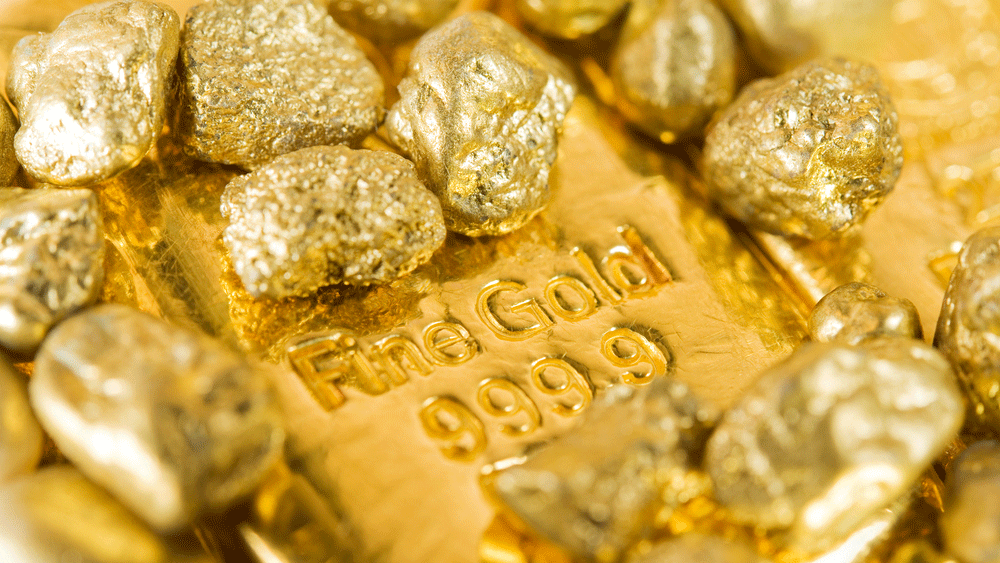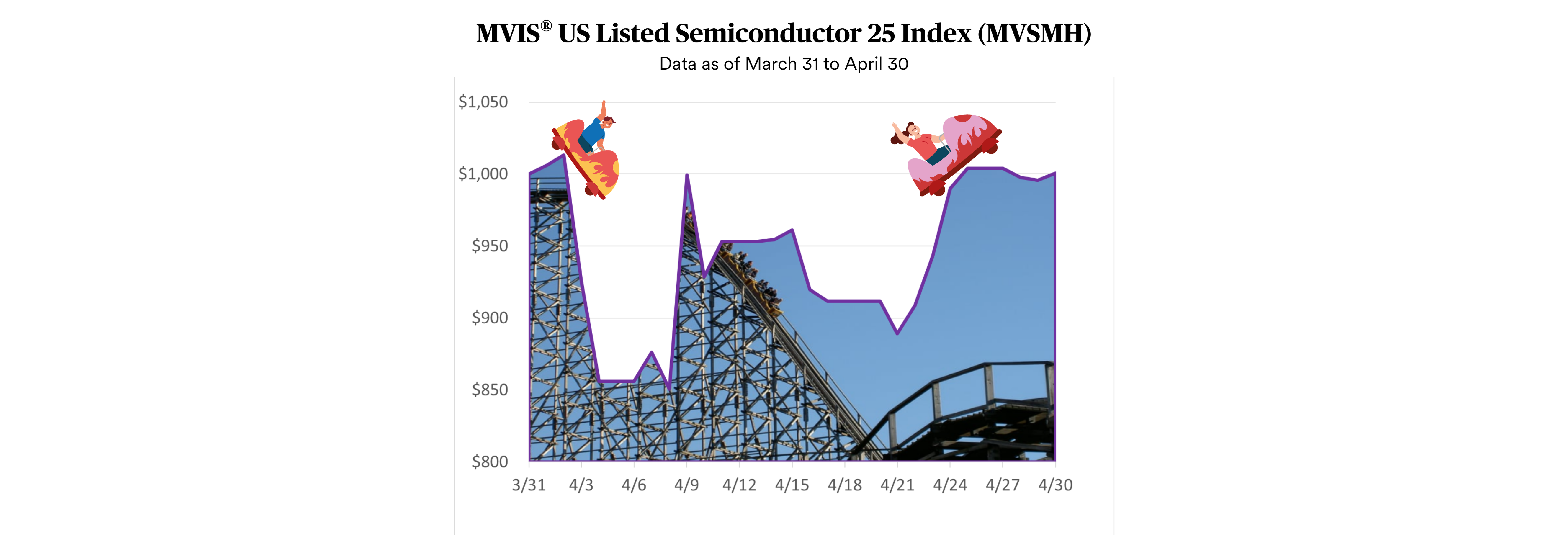The March 0.25% Fed rate increase was the third in this tightening cycle that began in December 2015. In all three instances, increasing pessimism in the gold market caused gold to fall to long-term or technical lows. This pessimism was caused by anticipation of rising real rates, a strong U.S. dollar, and faith in the Fed's outlook for a strengthening economy. However, the economy has not been as robust as hoped and recently, rising inflation has caused real rates to fall.
Markets were irrationally causing the U.S. dollar to become overbought and gold to be oversold before each rate increase. Three times makes a pattern and if we have learned anything in our history of investing, it's that trading patterns end once they are recognized.
Gold Price vs Real T-Bill Rates

Source: Bloomberg
We will look for market sentiment, Fed behavior, or some other driver to help change the pattern when the Fed hikes rates again. The market expects the next possible rate hike at the June Federal Open Market Committee (FOMC) meeting.
Get the latest news & insights from MarketVector
Get the newsletterRelated:
About the Author:
Joe Foster has been Portfolio Manager for the VanEck International Investors Gold Fund since 1998 and the VanEck – Global Gold UCITS Fund since 2012. Mr. Foster, an acknowledged authority on gold, has over 10 years of dedicated experience in geology and mining including as a gold geologist in Nevada. He has appeared in The Wall Street Journal, Barron's, and on Reuters, CNBC and Bloomberg TV. Mr. Foster has also published articles in a number of mining journals, including Mining Engineering and Geological Society of Nevada.
The article above is an opinion of the author and does not necessarily reflect the opinion of MV Index Solutions or its affiliates.




